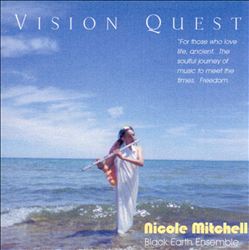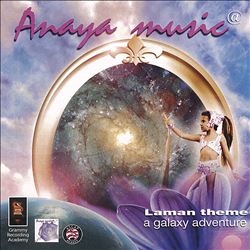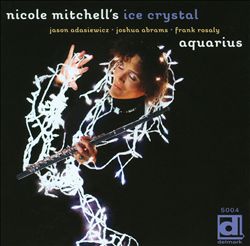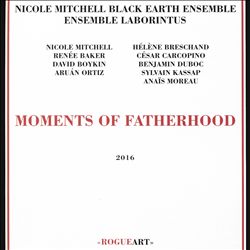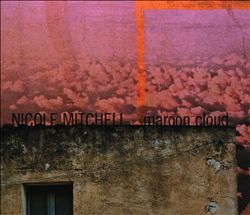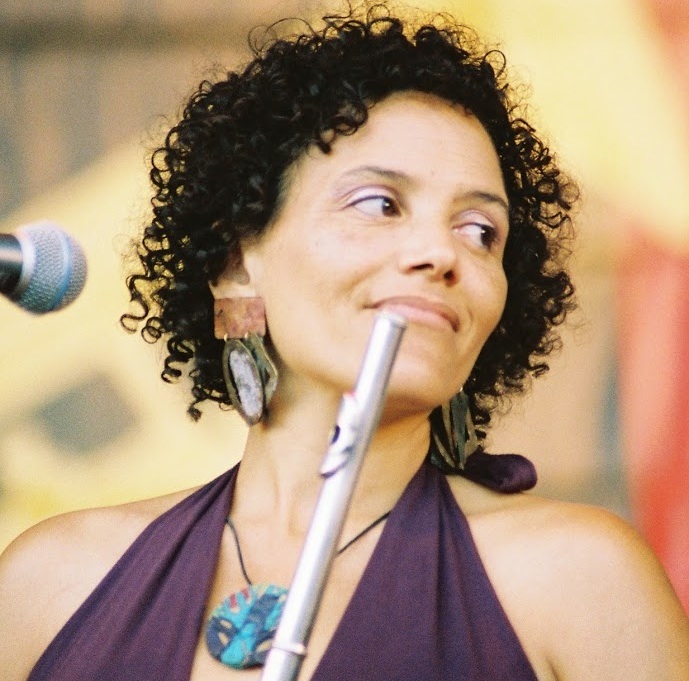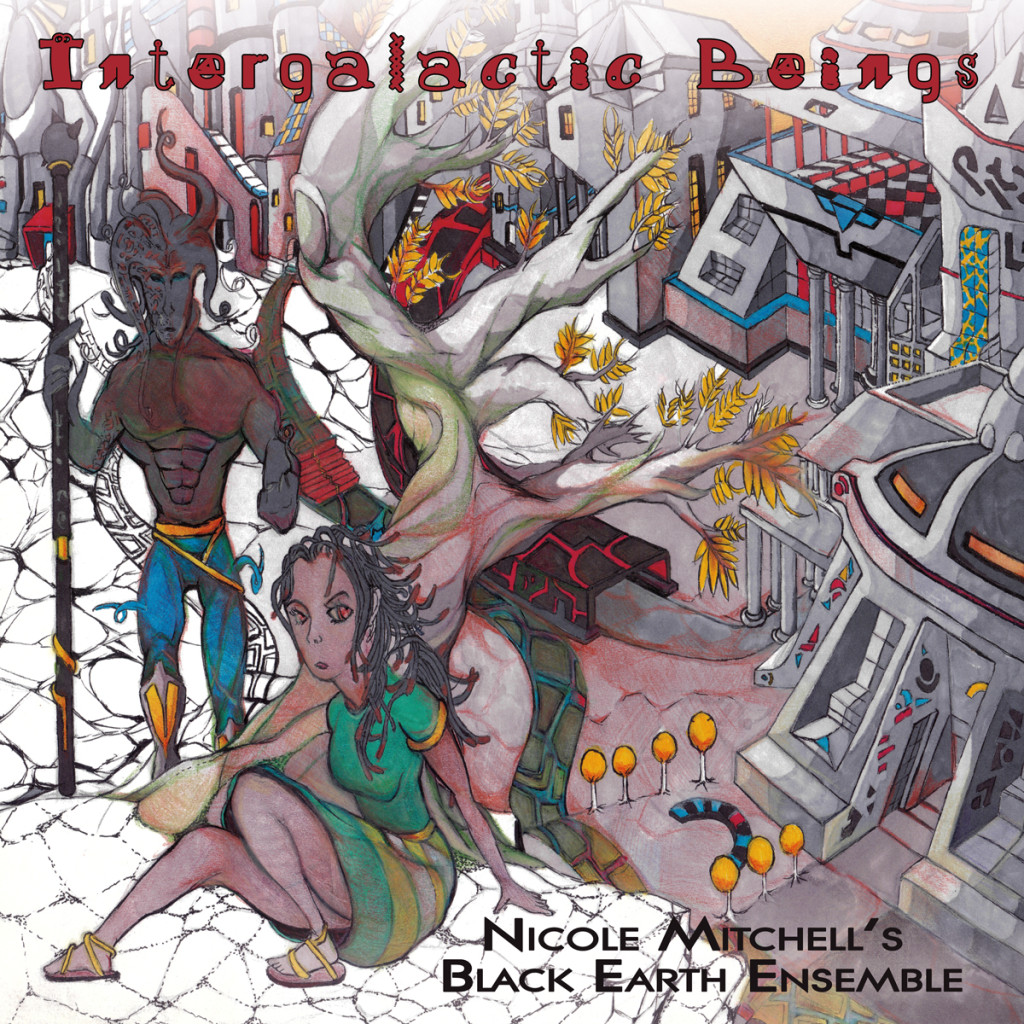SOUND PROJECTIONS
AN ONLINE QUARTERLY MUSIC MAGAZINE
EDITOR: KOFI NATAMBU
FALL, 2020
VOLUME NINE NUMBER TWO
B.B. KING
Featuring the Musics and Aesthetic Visions of:
BRANDEE YOUNGER
(October 31-November 6)
CHRIS DAVE
(November 7-13)
MATANA ROBERTS
(November 14-20)
NATE SMITH
(November 21-27)
T.J. ANDERSON, JR.
(November 28--December 4)
KEYON HARROLD
(December 5-11)
NICOLE MITCHELL
(December 12-18)
OLLY WILSON
(December 19-25)
KENDRICK LAMAR
(December 26-January 1)
JONATHAN BAILEY HOLLAND
(January 2-8)
WENDELL LOGAN
(January 9-15)
DONAL FOX
(January 16-22)
https://www.allmusic.com/artist/nicole-mitchell-mn0000234689/biography
Nicole Mitchell
(b. February 17, 1967)
Artist Biography by Thom Jurek
Nicole Mitchell is an award-winning flutist, composer, bandleader, recording artist, and educator. She has been an integral part of the avant-jazz and experimental music scenes since the early '90s. She is also a former president of Chicago's Association for the Advancement of Creative Musicians (AACM). On her first three albums with her Black Earth Ensemble (Vision Quest, 2001; Afrika Rising, 2002; Hope, Future and Destiny, 2004) on the Dreamtime label she established with saxophonist David Boykin, she garnered the attention of avant-jazz aficionados, but also the mainstream jazz press. Mitchell won Downbeat's Rising Star award between 2004 and 2011 consecutively, while in the latter two years she took home the Best Flute distinction. With 2007's Black Unstoppable, she began an ongoing, occasional relationship with Chicago's Delmark label. These early dates established Mitchell as one of the more original flutists and musical conceptualists in jazz and improvised music. With 2007's Xenogenesis Suite (Firehouse 12), she revealed her personal musical language on the first of several works of Afrofuturism inspired by the novels of Octavia Butler in particular. Subsequent titles include 2010's Intergalactic Beings; her debut for FPE, Mandorla Awakening II: Emerging Worlds, in 2016; and 2020's Earthseed, in collaboration with poet and conceptual performance artist Lisa E. Harris.
Mitchell was born in Syracuse, New York in 1967, and her family relocated to Anaheim, California when she was nine years old. There she began to study music, first piano and then viola, before switching to flute as a teen. Classically trained while in high school, she played in school and local youth orchestras. She matriculated to the University of California in San Diego as a math major, but after taking a jazz class with Jimmy Cheatham, she became obsessed with the music, and in 1987, after two years, transferred to Oberlin College, where she was disappointed and frustrated by the program and by a professor who told her constantly there was no room for her pursuit of jazz with her instrument and harangued her to play saxophone instead.
Mitchell moved again in 1990, this time to Chicago. She worked for Third World Publishing -- a publishing house that focuses on black culture -- and busked on the streets. Her travels through the city brought her into contact with members of the AACM (she joined in 1995), and she began playing with a female ensemble called Samana. Mitchell stood out; she was soon being asked to lend her flute to projects by musicians like David Boykin, Ed Wilkerson, Daniel Givens, and Capital D, to name a few. Near the end of the decade, she began teaching at Chicagoland institutions like Northern Illinois University, Chicago State University, Northeastern Illinois University, Wheaton College, and the University of Illinois at Chicago.
Mitchell issued Vision Quest, her debut with her band the Black Earth Ensemble (featuring violinists Savoir Faire and Edith Yokley, bassist Darius Savage, and percussionists Hamid Drake and Avreeayl Ra), in 2001. Vision Quest received uniformly positive reviews from the Chicago music press. A year later, her Afrika Rising arrived on Dreamtime Records (a label she established with Boykin), and her press coverage was expanding, with national press outlets beginning to notice her as well. Her first truly large-scale work was 2004's Hope, Future and Destiny; the score for a large multi-disciplinary performance work for over 50 participants in a multitude of media forms, its studio cast including Boykin, Tomeka Reid, Josh Abrams, and Tony Herrera, to name a few. In 2006, The Chicago Tribune voted her Chicagoan of the Year. Mitchell moved her Black Earth Ensemble to Delmark for Black Unstoppable in 2007, which was celebrated internationally for its bold new music and its leader's technical gifts as an instrumentalist and composer. In addition to the aforementioned players, guitarist Jeff Parker joined the ever-evolving ensemble.
A year later, Mitchell issued the landmark Xenogenesis Suite: A Tribute to Octavia Butler for Firehouse 12. The work was commissioned by Chamber Music America and premiered at Vision Festival XII in New York City. It was based on Butler's Xenogenesis trilogy of novels and was the first of Mitchell's works to be regarded under the umbrella of Afrofuturism, though all of her previous work had also been informed by its tenets. Arriving in 2009, Anaya was her debut album for France's Rogue Art label -- she had performed in Europe extensively by that time -- which has since become a periodic home for her work. That year, she also created Honoring Grace: Michelle Obama for the Jazz Institute of Chicago. In 2010, Mitchell released Renegades on Delmark, her first recorded collaboration with her Black Earth Strings, a chamber group comprising cellist Tomeka Reid, gimbri and bass player Josh Abrams, violinist/violist Renée Baker, and drummer/percussionist Shirazette Tinnin. 2010 also marked the first of eight consecutive years Mitchell won Top Flutist of the Year from both the Jazz Journalists Association and the Downbeat Critics Poll. She also released a quartet date featuring pianist Craig Taborn, saxophonist Boykin, and drummer Chad Taylor entitled Emerald Hills for Rogue Art.
Mitchell was prolific in 2011. The Ethiopian Princess Meets the Tantric Priest, the debut from the Indigo Trio (with Drake and Harrison Bankhead), and Before After with Joëlle Léandre and Dylan van der Schyff, were both released by Rogue Art, while Awakening, a quartet date with Bankhead, Parker, and drummer Avreeayl Ra appeared from Delmark. In addition, her composition Flight for Freedom for Creative Flute and Orchestra: A Tribute to Harriet Tubman was premiered with the Chicago Composers' Orchestra in December. She was also a recipient of the prestigious Alpert Award in the Arts. The following year, the flutist released two collaborative albums: Arc of O (For Improvisers, Chamber Orchestra and Electronics) with an_ARCHE NewMusic Ensemble (a Polish chamber group) and Three Compositions with Roscoe Mitchell, both on Rogue Art. She was also a member of the first class of recipients of the Doris Duke Artist Awards.
In 2013, Mitchell debuted her quartet Ice Crystal on the album Aquarius for Delmark. The band also featured vibraphonist Jason Adasiewicz, drummer Frank Rosaly, and Abrams on bass. Engraved in the Wind, Mitchell's first-ever solo flute recording, was also offered by Rogue Art. In 2014, the label released The Secret Escapades of Velvet Anderson (a tribute to mentor and saxophonist Fred Anderson), offering her flute in a quartet setting with Taborn, Boykin, and Taylor. The same year, Intergalactic Beings, an archival Black Earth Ensemble date from 2010 -- also drawn from the writing of Butler -- was issued by FPE; it marked the beginning of an ongoing relationship with the label, which has released some of her most adventurous work.
Mitchell, by then a professor of music at UC Irvine, helped to design the 2014 graduate studies program "Integrated Composition, Improvisation and Technology" (ICIT). She was also commissioned by the French Ministry of Culture and the Royaumont Foundation for the development and French tour of Beyond Black, a collaboration with kora master Ballaké Sissoko and the Black Earth Ensemble. A year later, she was commissioned by the French American Jazz Exchange for the work Moments of Fatherhood, featuring the Black Earth Ensemble and the Parisian chamber group Ensemble Laborintus; it premiered at the Sons d'Hiver jazz festival in January 2015. Later that year, Artifacts (with Reid and Mike Reed) was released by 482, while Moments of Fatherhood appeared from Rogue Art in 2016.
Early the following year, Mitchell released Mandorla Awakening II: Emerging Worlds on FPE. An original work, it was commissioned by Chicago's Museum of Contemporary Art and cut two years earlier at its world premiere at the venue. Its concept, while reflecting the undeniable influence of Butler, was original. Mitchell used various musics including modern free jazz, gospel, rock, and contemporary classical, and engaged several folk styles from across the globe in a metaphorical narrative that used classic dualities to ask the question: "What is progress?" The Black Earth Ensemble for this performance included Baker, Reid, Alex Wing on guitars and oud; percussionist Jovia Armstrong; Tatsu Aoki on bass, shamisen, and taiko; Kojiro Umezaki on shakuhachi flute; and, on three of the final four tracks, Chicago-based spoken word artist Avery R. Young contributed vocals. The same year, she collaborated with poet Haki Madhubuti on Liberation Narratives, along with drummer Tomas Fujiwara, cellist Tomeka Reid, and bassist Harrison Bankhead, among others. Mitchell assembled a drummer-less quartet with Reid, pianist Aruan Ortiz, and vocalist Fay Victor for a performance at National Sawdust in Brooklyn as part of John Zorn's Stone Commissioning Series. The group performed and recorded her eight-part suite entitled Maroon Cloud, a paean to the human gift of imagination and its ability to foster resistance in our dystopian times. The completed recording was released in August 2018 on FPE Records.
Mitchell left UC Irvine to accept the role of director of jazz studies in the University of Pittsburgh's Deitrich School. In 2020, she returned to FPE with Earthseed, a collaborative outing with poet and musician Lisa Harris. For this album, she focused on Butler's dystopian Parable novels -- Parable of the Sower and Parable of the Talents -- which warned readers about the disintegration of American culture and infrastructure due to tyrannical rule. Earthseed was issued during the early summer of 2020, amid weeks of nationwide protests following the death of unarmed citizen George Floyd at the hands of police in Minneapolis.
Mitchell and Harris further enlisted vocalist Julian Otis, violinist Zara Zaharieva, cellist Tomeka Reid trumpeter/electronicist Ben LaMar Gay, and percussionist Avreeayl Ra to complete their ensemble
https://musicians.allaboutjazz.com/nicolemitchell
 Nicole Mitchell
Nicole Mitchell
”One of Chicago's more inspiring jazz visionaries, “ (Chicago Tribune), Nicole Mitchell is a creative instrumentalist, composer, bandleader and an educator. With her ensembles, and as a featured flutist, she has been a highlight at art venues and festivals throughout the U.S., Canada and Europe. A recent recipient of the 2011 Alpert Award and a former president of the Association for the Advancement of Creative Musicians (AACM), Nicole Mitchell explores new sounds and creative techniques as a flutist and as a composer. She has performed with creative luminaries including George Lewis, Miya Masaoka, Anthony Braxton, Roscoe Mitchell, Myra Melford, Orbert Davis, Lori Freedman and Muhal Richard Abrams. One of very few African American women jazz instrumentalists, Mitchell also works on ongoing projects with Hamid Drake, David Boykin, Ed Wilkerson, Dee Alexander, Rob Mazurek, Harrison Bankhead and Arveeayl Ra. Mitchell was honored to be charted #1 in Downbeat magazine Critic’s Poll for Flutist 2010, Flutist of the Year 2010 by Jazz Journalists Association and was named “Chicagoan of the Year 2006” by the Chicago Tribune. Black Earth Ensemble (BEE), and Black Earth Strings (BES), founded by Mitchell, are forums for her compositions and creative vision. Nicole Mitchell is also a recipient of the Illinois Arts Council fellowship for music composition (2005, 2002). Mitchell has been commissioned by the Chicago Museum of Contemporary Art, Chamber Music America, Ravinia, Chicago Department of Cultural Affairs, the Chicago Jazz Festival and the Jazz Institute of Chicago. Mitchell also does a variety of residencies, workshops and panel discussions in Europe, Canada and the U.S. with a focus on creative music.
Bandleader
Black Earth Ensemble (BEE), founded by Mitchell
in 1997, is a forum for her compositions and creative vision. BEE is a
multi-genre, multi-generational celebration of the African American
cultural legacy. Black Earth Ensemble has performed at the Sons d'hiver
Festival (Paris), Guelph Festival (Canada), Le Labbre Nude Festival
(Rome), Kerava Jazz Festival (Finland), Mito Festival (Milan) and Nouve
Forme Festival (Verona). With Black Earth Ensemble, Mitchell has
recorded three critically acclaimed CDs: Vision Quest (Dreamtime),
Afrika Rising (Dreamtime), Hope, Future and Destiny (Dreamtime), Black
Unstoppable (Delmark) and Xenogenesis (Firehouse 12). Mitchell also
leads Black Earth Strings, an acoustic quartet that brings African
rhythms, contemporary sounds and swinging improvisation to a chamber
music setting. Black Earth Strings recorded Renegades on Delmark
Records.
Flute Soloist
Nicole Mitchell has performed as
featured soloist with the Orbert Davis Chicago Jazz Philharmonic at the
Auditorium Theater and at Millineum Park in Chicago. (2005-6) In
December 2005, Nicole Mitchell performed a special duo concert with
pianist Muhal Richard Abrams in celebration of the AACM's 40th
Anniversary in Chicago. Ms. Mitchell performed as a soloist with
composer George E. Lewis and the International Composer's and
Improvisers Ensemble (2003) in Munich, Germany. In Chicago, Mitchell has
also been a featured soloist with Chicago's CUBE Ensemble, University
of Chicago's Jazz X-Tet, the New Black Repertory Ensemble of Columbia
College and the Orbert Davis' Chicago Jazz Philharmonic. She recently
was a flute soloist with the Chicago Sinfonietta for a premiere
composition by composer Renee Baker.
Composer
Nicole Mitchell
has written two suites inspired from science fiction writer Octavia
Butler. Xenogenesis was supported by Chamber Music America's New Works:
Creation and Presentation Program funded through the generosity of the
Doris Duke Charitable Foundation and premiered at the Vision Festival in
June 2007. In 2010, Mitchell premiered her second suite, Intergalactic
Beings at the Museum of Contemporary Art. Mitchell was also an Illinois
Arts Council fellow for music composition (2005, 2002). In November
2003, Mitchell unveiled Vision Quest: Hope, Future and Destiny (VQ), a
multi-dimensional community project featuring Black Earth Ensemble and a
cast of over fifty people in dance, video, acting with live music. This
major project was sponsored by the Jazz Institute of Chicago through
the support of the Illinois Arts Council.
Additional Projects
Mitchell currently directs other projects which include: Sonic
Projections with saxophonist David Boykin, pianist Craig Taborn and
drummer Chad Taylor. They recorded Emerald Hills (Rogue Art) in 2009.
Tindanga Mama (an multi-generational, all- woman ensemble) and the Aaya
Sensation (a group showcasing the talents of Mitchell's teenage
daughter). In addition to her own projects, she performs with the
collective, Frequency (with Ed Wilkerson Jr., Arveeayl Ra and Harrison
Bankhead), the Indigo Trio (with Hamid Drake and Harrison Bankhead), the
Exploding Star Orchestra (project of Rob Mazurek), the Orbert Davis
Jazz Philharmonic, the New Black Reperatory Ensemble (of Columbia
College), the Great Black Music Ensemble (of the Chicago AACM) and the
David Boykin Expanse (with David Boykin, Josh Abrams, Jim Baker and Mike
Reed). Mitchell has also performed in Anthony Braxton's 12tet. Her
newest project is the AACM Creative Youth Orchestra, to begin in fall
2006.
Educator
In 2005, Mitchell was a faculty member of the
Vancouver Creative Music Institute (Canada) and the Sherwood Flute
Institute (Chicago). In June 2006, Mitchell returned to Vancouver to
work with a large ensemble of talented high school musicians and lead
their performance at the Vancouver Jazz Festival and will continue
working with them in June 2011.
Mitchell is a Visiting Lecturer of Jazz at University of Illinois, Chicago. She also teaches jazz at Chicago High School for the Arts. Mitchell enjoyed several years sharing music with children in the Chicago Public Schools through support of Music Alive and Ravinia Festival Organization.
Nicole Mitchell: Flute, Healing and Wanting the Best
Best known for her shifting-personnel large ensemble Black Earth Ensemble, Mitchell's sprawling but deeply melodic compositions make the most of Black Earth collaborators like percussionists Hamid Drake and Avreeayl Ra, saxophonist David Boykin, violinist Savoir Faire, trumpeter Corey Wilkes and many other mainstays of Chicago's South Side jazz community. Black Earth's three recordings—Vision Quest (2001), Afrika Rising (2002) and Hope, Future and Destiny (2004)—on Dreamtime Records, the label she runs with Boykin, are so good that their relative obscurity seems almost criminal.
If the Black Earth Ensemble CDs showcase Mitchell's band leading and compositional skills, several recent recordings present her as an improvisational flautist of the highest caliber. The self-titled debut album from the collective band Frequency, released on Thrill Jockey in late 2006, didn't make my 2006 Best-of list, and I've been kicking myself for excluding it every time I listen to it—no music seems more representative of what makes Chicago great and unique in jazz music, and it's the only music I've heard in years that's reduced me to tears. It's lovely stuff.
Live in Montreal (Greenleaf, 2007), a thrilling set of mostly-improvised material by the Indigo Trio consisting of Mitchell, Hamid Drake and bassist Harrison Bankhead (also of Frequency) is almost as good, and may be the best source for those seeking Mitchell the flautist as opposed to Mitchell the composer, as the trio format allows plenty of space for her technically crisp, melodically imaginative and profoundly heartfelt playing.
One gets the impression Mitchell's profile is finally rising outside of Chicago. She was named #1 Rising Star Flutist for 2006 by Down Beat Magazine, surely a sign of growing recognition, and no player seems more highly esteemed by her fellow musicians. She's also an extremely pleasant person with an almost gleeful—and infectious—laugh. She's not an ironic person, or a jaded one—she believes in the power of music to uplift and celebrate human existence, and that quality of joy and positivity is omnipresent in her music. I spoke with Mitchell on the telephone as she hurried to run errands before she left town for Paris (her trip to the dry cleaner has been omitted from the interview transcript).
- Frequency
- Indigo Trio
- Black Earth Ensemble
- As Yet Unreleased Material: Nicole Mitchell Trio and Solo Work
- AACM
INTERVIEW:
All About Jazz:
The first group of yours I want to discuss is Frequency, a collective
quartet consisting of you, saxophonist Ed Wilkerson, bassist Harrison
Bankhead and drummer Avreeayl Ra. I believe this band's been in
existence since 2000, but you have a longer history with these musicians
and an absolutely stunning rapport with them as well.
The
group's self-titled debut album came out last year on Thrill Jockey.
Everyone writes for this group, and the record is just very, very
good—composed of equal parts memorable, beautiful melody and pure,
shimmering sound—like, I think, a lot of things you're involved with.
There's so much joy of communication and the music is so evocative of
place and setting—the pieces are like sonic movies. It's vastly
improvisational music, and there's a very human kindness to the playing.
How'd the group form?
Nicole Mitchell:: Well, Ed Wilkerson and I were actually doing a musical; we were doing West Side Story
together. That was really the time that I got to know him a little
better. So he just said, "Why don't we start playing together? Let's do
something together. Because as you know, most of his work has been with 8
Bold Souls, which is a large group, and having such a large group can
be a challenge economically, in terms of getting work—but it also
doesn't leave as much space for him as an improviser. And he's a great
improviser, but he focuses on his compositional work.
And I do
the same thing with my group Black Earth. When you have a big group like
that, you really are more focused as a composer than as an improvising
musician. And Avreeayl and I had worked together for several years,
because he played in Black Earth, and he was a mentor of mine before he
started playing in my group. Ed and Avreeayl have both been great
mentors for me. Harrison was just someone who had had a long
relationship with Ed—and when we were putting the group together, Ed
wouldn't consider having anyone but Harrison.
Who, of course, was
a fantastic choice, because Harrison, to me, is one of the greatest
bass players of this time. His improvisation, especially free
improvisation, is his greatest strength. It's really the greatest
strength of both Avreeayl and Harrison—playing creative music. They can
do other things; they can play straight-ahead, they can play the other
aspects of the tradition. But when they're playing creative, that's when
they're really doing what's in their heart.
So we've had a great
friendship over the years, all of us, individually and collectively. We
just have a lot of fun together, so the music comes easily. Especially
for them—they've known each other for much longer than then I've known
them, of course, since they're from a different generation than I'm
from. But they've always been super-supportive, and they've always had a
great belief in me, which really helps me in my own development. So I
really enjoy the group and they really enjoy the group.
It's
like an oasis for us when we can play together, and I'm glad we finally
got ourselves together enough to make the CD! Because, you know, we're
so busy. And that's just the story of this music during this time—people
have so many different projects and it's hard to just schedule the time
together and go ahead and record. I'm glad we got a chance to do that.
Hopefully, there will be more recordings to follow. I'm glad we've had
such a positive response.
AAJ:: Well, people are
always going to respond to a recording as good is that one, I think.
When was the recording made? Was it recorded last year?
NM:: Yeah, we did it last year. We really took our time with it; we did a lot of improv in the studio and chose the best stuff—the stuff that we liked the best. And when we play, even though we have this bag of songs that we've shared with each other, a lot of times it's more likely that we're just going to improvise most of it. Because that's kind of the angle of the band; it's what we do together.
AAJ:: You answered one of my questions. I was going to ask if you recorded a lot of improvs and then chose the best ones for the record. I guess you did.
NM:: [Laughing] Yeah. And some of the other material could definitely have been used, but you can't fit everything on there. You don't want to overwhelm people with too much stuff. You want to make a statement and say that's enough—leave it at that.
AAJ:: Do you think the group's sound has changed since you started playing together, or, for that matter, since you made the record?
NM:: Well, I know that I've grown a lot. I know that when I first started with the group, it was one of the first regular opportunities for me to develop with free improvisation. I mean, I had done a lot of stuff like that, but we had a weekly gig at the HotHouse for almost two years. So that was a great time for us to develop. During that time period, we did have different drummers; Avreeayl wasn't the first drummer. We had Vincent Davis for a while, and he wasn't even the first, and finally we had Avreeayl, and he was super-excited to be a part of it. And that's important—he really wanted to do it, and for the other drummers, it was just a gig. So when Avreeayl came in, that really finalized the connection with everyone. Because I had a history with Avreeayl, and Ed had his own history with Harrison. It worked out really well.
AAJ::
Let's talk about some of the pieces on the recording. "Take Refuge is
one of your compositions, and this is one that I find myself coming back
to again and again. In a way, it's among the more traditionally
jazz-ish of the pieces, just because it has that theme book-ending the
solo sections. What I love here is the contrast of that airy unison
tenor/flute theme and the incredibly restless, dense playing of Avreeayl
and Harrison—like air and earth.
NM::
That song is pretty old. I was trying to record that tune for a long
time. And when I gave it to Frequency, that was where it fit.
Originally, it was a Black Earth tune. But I never recorded it with
Black Earth, and when I brought it to Frequency, it kind of became
almost like a theme song for the group. It just fit really well—the
spirit of it really fit, because the idea is for Harrison on bass not to
be trying to accommodate and comp behind the melody, but to really be
free and be percussive. And it's the same with the drums, so it really
worked well with them specifically to play that tune.
I think
it's funny, too, because the meaning of the title "Take Refuge
originally meant that we take refuge in this music. But at the same
time, it's such a wild song that some people might think that they have
to take refuge from it [laughing].
AAJ:: Yes, it's a warning. They need to put on their raincoats.
NM:: Yeah! It means both things, so you can call that inside and outside.
AAJ:: I really hate to overuse a word like "beautiful, but Harrison's piece "Portrait of Light is, well, beautiful.
NM:: Yeah. What else can you call it? It really reflects his own serenity as a person. That's Harrison. He's a very peaceful guy.
AAJ::
Tell me about Avreeayl's tune "Satya. It's the long one on the CD. It's
just such a wonderful expression of what this group does, and a lot of
it seems very improvised—in fact I think the whole first half is an
improv.
NM:: It's more conceptual, yes. It's more conceptual than melodic. He wanted it to start with a storm, and then for the storm to clear. Then he had this melody, and it is very beautiful. That song makes me want to cry sometimes. It's definitely a love song. One thing I want to say is that simplicity and unison of a very simple melody—there's something very human about that. That's what I love about being a creative musician and being able to embrace those old traditions, the folk traditions as well as dealing with these complex ideas, and being able to appreciate those things. Because some people rebel against that—they rebel against simplicity, and especially unison: "Unison? What's the point of that? But there's something that touches you about that; it's powerful.
AAJ:: Well, maybe some musicians don't want to do something that they learned how to do a long time ago. It's not hard enough.
NM::
Yeah. But I think we all agree that part of what we're trying to do is
to bring healing, and that comes out in a lot of the music. There end up
being a lot of pieces that are, like you said, "peaceful.
Indigo Trio
AAJ::
Let's talk about Indigo Trio, which consists of you, Harrison Bankhead
again, and Hamid Drake. You've played with Hamid for years in your Black
Earth Ensemble, and he and Harrison have a very long musical history
together. Your brand-new record on the Greenleaf label is Live in Montreal,
a recording of the group's first-ever performance as a trio from June
of 2005. You've played with Hamid for years in your Black Earth
Ensemble.
| "I think we all agree that part of what we're trying to do is to bring healing, and that comes out in a lot of the music. |
So when I started Black Earth, I kind of made a joke to Hamid: "Hey, you want to come play drums tonight? What was funny was that all the times I'd known him and seen him perform, I'd never even seen him on the traps. He would only play, like, tablas and hand drums. And when I brought him into Black Earth, we were mostly playing smaller percussion. He wasn't even bringing his traps. We didn't start playing together in that aspect until much later.
But he's a great friend, and he's been a real big brother to me. Hamid's always encouraged me, looked out for me, and told other people about me. And he performs everywhere, so I know a lot of opportunities I got starting out came from him telling people about me who then checked out my music. I know he was connected to the beginnings of my touring throughout Europe, because he's doing those festivals all the time. So it was a lot of fun to come together. He was like, "Okay, we're going to do a trio gig—who do you want to play bass? I said, "I want the best! I want Harrison! So that performance on that CD is actually the first performance we had together, and it was mostly improvised, but in a completely different way from Frequency.
AAJ:: How is it different?
NM:: I would say that we tend to improvise in a way that's not as abstract. We tend to celebrate all the aspects of black music in our improvisations. With Frequency, we'll go a little bit more abstract, but in this group, we're a little more rooted. Which is a lot of fun. I really want to do it all.
AAJ:: Well, I've only had the CD for a day, so I can't act too smart, but "Velvet Lounge, improvisation or not, is a song. It's just a song that didn't exist before you played it, but I immediately felt like I knew it.
NM:: Right, exactly. It's a lot of fun. And for me, it's really limitless. Hamid's studied and explored so many styles, and they're all so interconnected, so any minute we can go anywhere. There's a lot of freedom in terms of that.
AAJ:: Has this group done many performances since you did that show that's documented on the CD?
NM:: We actually did a whole string of performances right after we did that show. It was funny, because it was a tour, but it wasn't a tour because it wasn't as if it was planned that way. It just happened that way, that we went from Montreal to New York to Maine. It's challenging to get together, because of all our schedules, and all our projects. But we actually have some music planned for this summer. We're going to be playing the Vancouver Festival and we're hooking up a tour to connect to that.

AAJ::
I noticed that of the songs that are pre-composed on the CD, you played
"Afrika Rising, which is a suite from the Black Earth Ensemble of the
same name from 2002. It sounds great, and of course it's completely
different to do the material with three players.
NM:: Yeah, instead of, like, fourteen.
AAJ:: But are you playing all three parts of the suite? I don't think I hear that.
NM:: We're actually just playing the first movement. Somehow the first movement got renamed "Afrika Rising, because it gets played a lot more than the other two movements. So people now know that first movement as "Afrika Rising, but the real title is actually "The Ancient Power Awakens. But it's just the first movement.
AAJ:: This group mostly improvises, but when you do play a composed piece, is it only yours? Or does everyone compose?
NM::
So far, it's been mine. But we would like to spend more time so that
everyone can contribute. That's really the goal. And it's important. You
know, I have Black Earth, so I have my space to just run stuff. I have
that space for my composition and my concept. Then I like to be in other
spaces where I can collaborate with people, especially people that I
really admire, people who are doing things musically I really admire. So
I really want to encourage Hamid and Harrison to bring tunes. The group
is definitely a collective. So much of what we do is improv, so we're
really essentially composing together.
I am hoping we can do a
lot of stuff. I think we could do a lot of work together, because it's
easy, it's transportable. For me, it's really an opportunity to showcase
my flute playing, because when I play with Black Earth, which is such a
big group, I want to focus on the composition. So here, I have a lot of
freedom. I mean, the Indigo Trio CD has a lot more flute on it [laughing].
AAJ:: Sure. There's a lot more room for flute.
NM:: Exactly. So it allows me to express, and I really enjoy that.
Black Earth Ensemble
AAJ:: I think we should talk about the group you lead, Black Earth. I think this is still the group for which you're best known. It performs your compositions and has a somewhat varying personnel, partly due to its size.
NM:: Well, it's partly me, too. I get
these ideas about instrumentation, I change my mind. I always have made
it clear to people that it's not a fixed group. I want to be able to be
flexible. So in relation to what date we get to play, where we have to
go, people's schedules, and me as a composer having different ideas—I
needed it to be flexible.
And so we have a big family; that's how
we look at it. We've got something like thirty musicians within the
Black Earth family that play at different times, and I think it's worked
for us. I try to make sure everybody gets a chance when we have the
bigger gigs, and it's fun to have that element of surprise. The audience
never knows exactly who's going to be playing in the group.
Then,
with different projects, I mix things up. For example, we had a concert
in Rome last spring where I featured two vocalists, Dee Alexander and
Ugochi [Nwaogwugwu]. Now, Dee Alexander is pretty well-known in Chicago,
and hopefully, elsewhere. She's a great jazz vocalist. And Ugochi is
coming from another place—she's more of a neo-soul vocalist and she's
got a great ear and a great tone quality. So I was really excited to
choose her. She creates her own music, and it's really great, but it's
not necessarily from the jazz background.
So this music is very
influenced by R&B and the blues—it's coming from a whole other
place. So I'm really excited to get this new record out. My goal is to
get it out this year.

AAJ: Tell me more about the music you've written for it. NM: It's more influenced by R&B, and the blues—even hip-hop. And it's all interweaved into the music. In addition to that, I presented a program of music in Poznan, Poland. I called this group the Harambee Project, which also hasn't been recorded yet. We did present the music in November, and this was something like a fourteen-piece group. "Harambee is a Swahili word meaning "to pull together and it was a connection between musicians—some from the AACM, some who had worked with Black Earth previously, and Tatsu Aoki, who is a Japanese jazz musician who lives in Chicago.
AAJ: Oh, yes, the bassist.
NM:
Yes. So he worked with us. We also had taiko drummers, so it was a
completely different concept from what we had done previously with Black
Earth. That's why I gave it a different name. That also included
Harrison, Mwata Bowden on baritone sax, [saxman] David Boykin,
[trumpeter] Corey Wilkes, Dee Alexander, Justin Dillard on piano and
Avreeayl on drums. I hope I'm not leaving anyone out.
So there's
that project. And then I have a whole other project going to the Vision
Festival this year. It's a Black Earth concert, but I'm writing new
music because I got a commission from Chamber Music America to create a
suite of pieces inspired from the African-American science fiction
novelist Octavia Butler. So I'm working on that now. So it's a challenge
to get all this music out. Because, you know, Black Earth has only been
released on Dreamtime, which is my label—mine and David Boykin's label.
So we're getting ready to put out the next Black Earth CD, but I'm
hoping in the future that people can recognize the value of Black
Earth—and maybe give me some help here! It's challenging.
AAJ: Maybe the Greenleaf guys could do something.
NM: The magic of Greenleaf is that they only sell online. And the Paperback series features live concerts.
AAJ: Which are relatively inexpensive to record.
As Yet Unreleased Material: Nicole Mitchell Trio and Solo Work
AAJ: I think there's another project you haven't mentioned. Didn't you record a live record at the Vision Fest in June with the Nicole Mitchell Trio, which is yourself, bassist Josh Abrams and drummer Myron Cherry?
NM:
I did, but it hasn't come out. How did you know about that? It's
actually ready to go, but I hadn't really decided if I was going to put
it out myself, or get somebody else to put it out. And I didn't want it
to compete with the Indigo Trio. I was thinking about having it come in
June, around the time of the Vision Fest. That would give enough space
for Greenleaf to put out Indigo Trio.
AAJ: Do you have a solo record recorded that also isn't out yet?
NM: I do, yes. The solo record was recorded in Maine. I did a residency at the Haystack Mountain School of Crafts in the summer of 2005. I was there for two weeks as a visiting artist, which was really fantastic. They gave me this wonderful space to do my work in, and I did music with all these visual artists. During the residency, I recorded the solo CD in the forest and at the ocean. So it's all outdoors, with the sounds of nature. It's mostly my flute and a few other things as well. I'm really excited about it. I just get so busy sometimes that it takes a while for everything to come out. But it's definitely ready to come out; I edited it last summer. It's ready to go.
AAJ: What's it called?
NM: Duo With Deer Island. One thing I've been doing in the last year or so is these residencies, just sharing my music as a composer with musicians and having them play the music. That's something a little different from playing festivals with your group. It's a different experience, and I'm going off to Paris to do that.

AAJ:
Tell me about working with composer/cornetist Rob Mazurek in his
large-ensemble group the Exploding Star Orchestra. The album's called We Are All From Somewhere Else,
and came out in early 2007 on the Thrill Jockey label. The personnel of
the band has varied from the very-large group I saw debut at Millennium
Park in 2005 to the smaller band that I saw play at the Dank Haus in
2006. Rob's compositions are wonderful.
NM:
I think Rob is a visionary. I really feel like he's got the visual art,
his sound, electronic music, and what he's done with the Chicago
Underground, and he's got all these other projects as well. It was
really a lot of fun to get the opportunity to collaborate with him and
to play his music. I like his music, and to me, it's very connected to
the spirit of the AACM, so it wasn't really that different or foreign to
me. I think our aesthetics connect. So it worked really well.
It's
a big group! I think it's probably the loudest group I've ever played
in, with two drum sets and everything. That's pretty loud for a flutist,
but I don't seem to have any problem with playing in loud settings
[laughing]. Hey, I can't believe you never asked me the "woman question.
That's good. I appreciate that. You know, "How is it to be a woman
bandleader?
AAJ: Oh, well, I assume it's hard. It never occurred to me to ask. It's like, "What is it like to be a human being bandleader?
NM: Exactly. It's the same for everybody.
AACM
NM: I think AACM is in a great place right now. We have two chapters—the Chicago chapter and the New York chapter. And a lot of our founders did migrate to New York, but I'm proud to say that the Chicago chapter's really held its own and has been able to foster younger musicians and really turn them on to creative music. Like, for example, Corey Wilkes. Of course, I was very influenced, and there are new people coming up like cellist Tomeka Reid, violinist Savoir Faire and pianist Justin Dillard. So there are always these new musicians coming up that are attracted to this organization, and then you have this sharing of the generations. So on that level, I really feel it's as strong as ever. As long as you have that connection, that multi-generational connection happening—that brings a real beauty to any group of people and what you're trying to do.
We have lots of goals. I think of that coined term, "power is stronger than itself, that has been associated with the AACM. We feel that, because there is so much that we can do. We try to do things, and there is so much more you haven't even tried to do yet! It's kind of like that still; even though it's forty years old now, there is so much more that can be done. For example, finding ways of having group health care as a lot of the membership is aging—these challenges come up for musicians in general.
It's a real sacrifice to be a musician, and with their love for what they do, some people really sacrifice the quality of life for that, and they're not really appreciated to the point where they're rewarded for that sacrifice. For example, William Perry just passed. He's a saxophonist from Chicago and hardly anyone even knows his name. But he was a great saxophonist and he never really got a lot of props or acknowledgement for his work—but everyone here knows who he was. There are so many musicians like that all over the place, and how do we find a way to really cherish them and have them still appreciated?
The AACM school has been the real root of the AACM—the teaching aspect. It's important to give young people the chance to learn instruments, first of all, because in a lot of communities in Chicago, there is no arts program in the public schools at all. So to be able to provide something to fill that void is filling a big gap right there, and it would take a lot of money to completely fill it. But we try to do what we can. And we try to build new partnerships.
For example, we established a new partnership with the Sons d'Hiver Festival in Paris, and that's part of the reason I'm going to Paris. We've established one night of AACM concerts within the festival. Last year, we had a Roscoe Mitchell and Matana Robertson duet and 8 Bold Souls. This year, we have Muhal Richard Abrams doing a solo set and the Ari Brown Quintet. So I hope to do the programming for the concerts, and to nurture the partnership so we can continue in that direction. But that's another interview in itself, talking about the AACM!
Selected Discography
Indigo Trio, Live in Montreal (Greenleaf, 2007)
Exploding Star Orchestra, We Are All From Somewhere Else (Thrill Jockey, 2007)
Frequency, Frequency (Thrill Jockey, 2006)
Mike Reed, In the Context of (482 Music, 2006)
NOMO, New Tones (Ubiquity, 2006)
Nicole Mitchell/Black Earth Ensemble, Hope, Future and Destiny (Dreamtime, 2004)
Hamid Drake & Bindu, Bindu (Rogue Art, 2004)
Nicole Mitchell/Black Earth Ensemble, Afrika Rising (Dreamtime, 2002)
Nicole Mitchell/Black Earth Ensemble, Vision Quest (Dreamtime, 2001)
David Boykin Expanse, 47th Street Ghost (Dreamtime, 2001)
David Boykin Outet, Evidence of Life on Other Planets, Vol. 2 (Box Media, 1998)
David Boykin Outet, Evidence of Life on Other Planets, Vol. 1 (Thrill Jockey, 1998)
Photo Credit
Frank Rubolino
https://www.newmusicusa.org/profile/nicolemitchell/
My Awarded Projects

Edgefest 2018: Chicago-Out Kind of Town
“The annual rite of fall in Michigan music…running off the beaten tracks.” – Downbeat
Awakening
An excerpt from “When Life’s Door Opens” for orchestra, three
vocalists and improvisers by Nicole M. Mitchell. Performed live by the
Tri-Centric Orchestra at the Roulette (NY) April 2013, featuring Damon
Locks spoken word, Fay Victor vocals, Josh Stinton bass clarinet,
Vincent Chancey french horn and Jason Hwang violin.
https://soundcloud.com/nicole-m-mitchell
Nicole M. Mitchell
California , United States
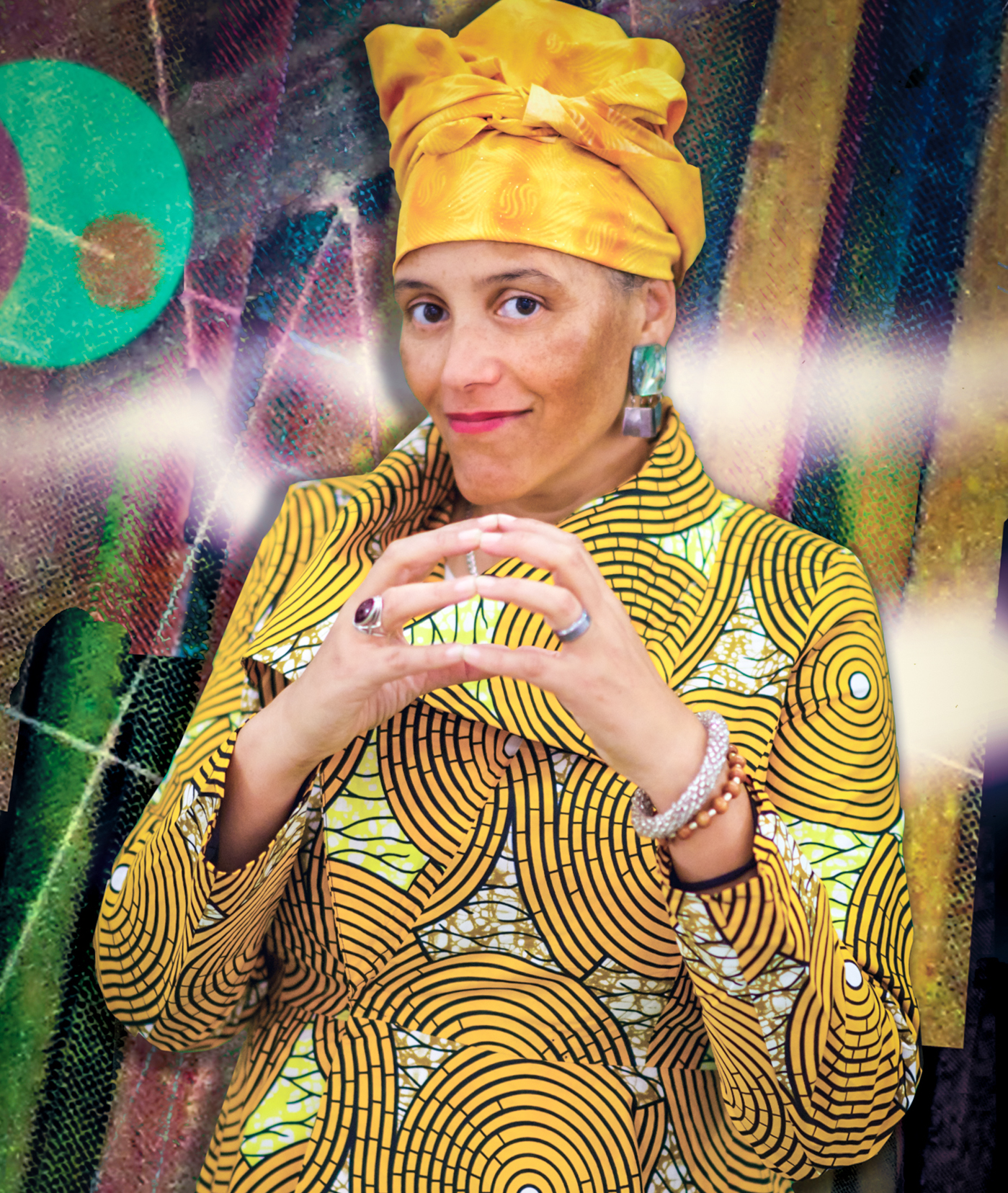
Black Earth Ensemble
Nicole Mitchell’s Black Earth Ensemble (BEE) is a musical celebration of the African American cultural legacy. Founded and directed in 1998 by creative flutist/composer Nicole Mitchell, BEE has performed in festivals and art venues throughout Europe, Canada and throughout the U.S., including Guelph Jazz Festival (Canada), Sons d’hiver (Paris), Karava Jazz Festival (Finland), La Labre Nude (Rome) and others. BEE’s music embraces the ancient past and paints visions of a positive future. The music is the weaving of swing, blues, avante garde jazz, bebop, African rhythms, Eastern modes and Western classical sounds. The name “Black Earth” was chosen to honor the feminine source that our lives depend on—Mother Earth. The purpose of Black Earth Ensemble is to inspire the human spirit with thought-provoking beauty and to present a positive, healthy and culturally aware expression. As a woman-directed, co-ed, multi-cultural, multi-generational group, BEE touches a range of emotional spaces rarely expressed in a “jazz” setting. Black Earth’s message is intended for audiences of all ages and backgrounds.
Nicole Mitchell
Nicole Mitchell is a creative flutist, composer, bandleader and educator, noted as “the most important jazz flutist of her generation” (Troy Collins, allaboutjazz). As the founder of Black Earth Ensemble, Black Earth Strings, Ice Crystal and Sonic Projections, Mitchell has been repeatedly awarded by Downbeat Critics Poll and the Jazz Journalists Association as “Top Flutist of the Year” for the last three years. Mitchell’s music reaches across genres and integrates new ideas with moments in the legacy of jazz, gospel, experimentalism, pop and African percussion through albums such as Black Unstoppable (Delmark, 2007), Awakening (Delmark, 2011), and Xenogenesis Suite: A Tribute to Octavia Butler (Firehouse 12, 2008), which received commissioning support from Chamber Music America’s New Jazz Works.
Mitchell formerly served as the first woman president of Chicago’s Association for the Advancement of Creative Musicians (AACM), and has been a member since 1995. In recognition of her impact within the Chicago music and arts education communities, she was named “Chicagoan of the Year” in 2006 by the Chicago Tribune. With her ensembles, as a featured flutist and composer, Mitchell has been a highlight at festivals and art venues throughout Europe, the U.S. and Canada.
Ms. Mitchell is a recipient of the prestigious Alpert Award in the Arts (2011) and has been commissioned by Chicago’s Museum of Contemporary Art, the Ravinia Festival, the Chicago Jazz Festival, International Contemporary Ensemble (ICE), the Chicago Sinfonietta Orchestra and Maggio Fiorentino Chamber Orchestra (Florence, Italy). In 2009, she created Honoring Grace: Michelle Obama for the Jazz Institute of Chicago. She has been a faculty member at the Vancouver Creative Music Institute, the Sherwood Flute Institute, Banff International Jazz Workshop and the University of Illinois, Chicago. Her work has been featured on National Public Radio, and in magazines including Ebony, Downbeat, JazzIz, Jazz Times, Jazz Wise, and American Legacy.
Nicole Mitchell is currently an assistant professor of music, teaching in “Integrated Composition, Improvisation and Technology,” a new and expansively-minded graduate program at the University of California, Irvine. Her recent composition, Flight for Freedom for Creative Flute and Orchestra, a Tribute to Harriet Tubman, premiered with the Chicago Composers’ Orchestra in December 2011. Among the first class of Doris Duke Artists (2012), Mitchell works to raise respect and integrity for the improvised flute, to contribute her innovative voice to the jazz legacy, and to continue the bold and exciting directions that the AACM has charted for decades. With contemporary ensembles of varying instrumentation and size (from solo to orchestra), Mitchell’s mission is to celebrate the power of endless possibility by “creating visionary worlds through music that bridge the familiar and the unknown.” She is endorsed by Powell flutes.
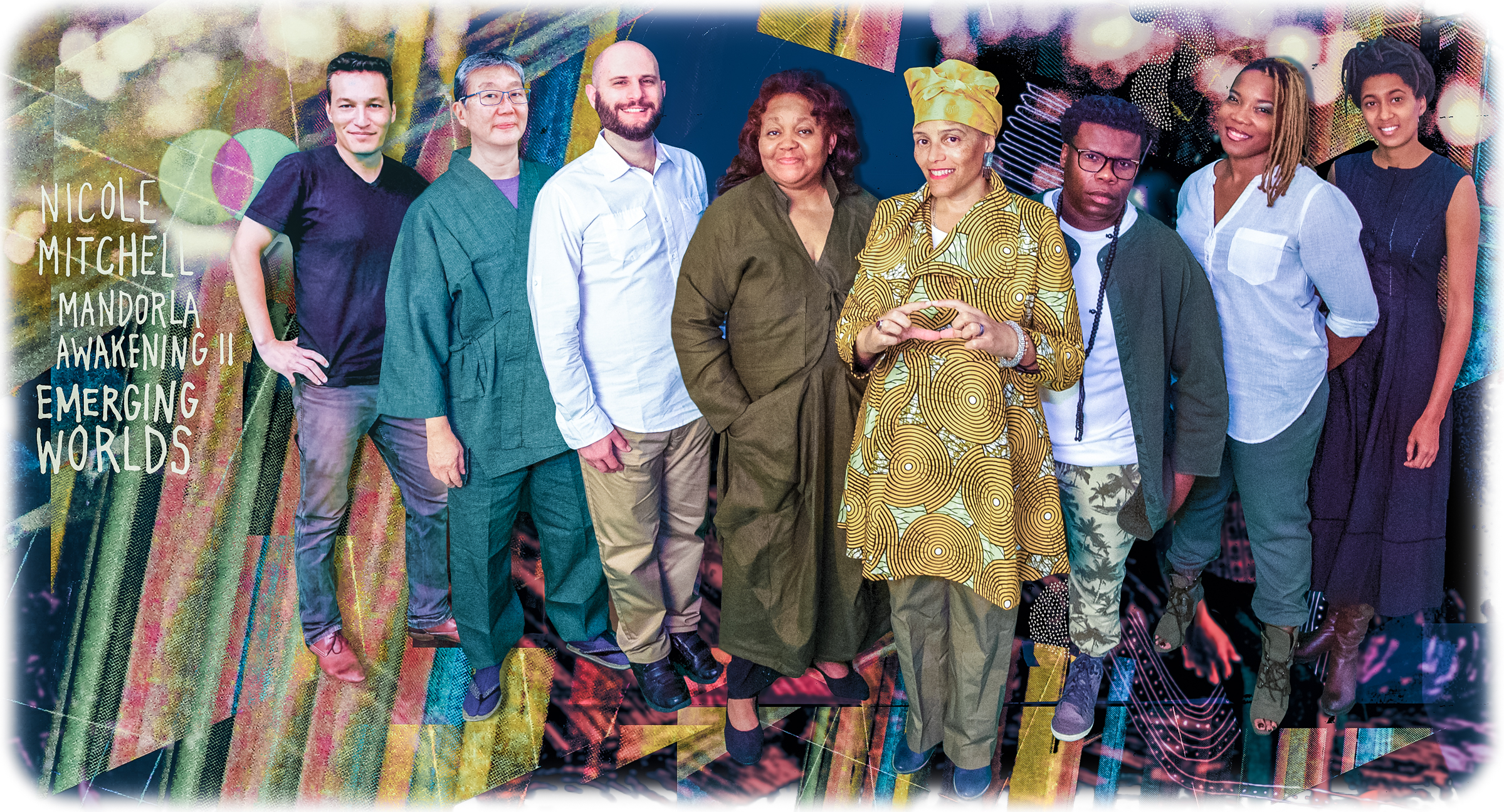
Discography
Nicole Mitchell
- Frequency, Frequency, Thrill Jockey, 2006
- Indigo Trio Live in Montreal, Indigo Trio, Greenleaf Music, 2007
- Renegades, Black Earth Strings, Delmark, 2008
- Emerald Hills, Nicole Mitchell’s Sonic Projections, Rogue Art, 2010
- Anaya, Indigo Trio, Rogue Art, 2010
- Awakening, Delmark, 2011
- Arc of O, Nicole Mitchell & an_ARCHE New Music Ensemble, Rogue Art, 2012
Black Earth Ensemble
- Vision Quest, Dreamtime, 2001
- Afrika Rising, Dreamtime, 2002
- Hope, Future and Destiny, Dreamtime, 2004
- Black Unstoppable, Delmark, 2007
- Xenogenesis Suite, Firehouse 12, 2008
- 3 Compositions, Roscoe Mitchell and Nicole Mitchell’s Black Earth Ensemble, Rogue Art, 2012
Nicole Mitchell is probably
best known for her work in jazz, but she recently has explored classical
and African music as well as rhythm & blues and soul. She puts it
all together impressively, letting the music speak loud and clear of the
passion that beats within her. Her approach reflects the philosophy of a
singular artist who has a different way of seeing the world.
– Jerry D’Souza, All About Jazz
“One of the most exciting jazz soloists and composers in the world”
– Peter Margasak, Chicago Reader
Mitchell’s writing balances
inside and outside aesthetics gracefully, vacillating between extremes
of freedom and structure with ease. Skillfully weaving circuitous lines
of bracing angularity with accessible, buoyant harmonies that recall the
glory days of hard bop, Mitchell’s tunes both challenge and entertain.
-Troy Collins, All About Jazz
Avoiding eclectic posturing by
virtue of her compositional acumen, Mitchell’s writing eschews stylistic
boundaries to embrace a multiplicity of genres, making each one her
own.
– Troy Collins, All About Jazz
Mitchell’s achievement lies in
her coherent assemblage of diverse elements of musical information to
draw novelty from familiarity. But then again Mitchell has shown herself
to be more than capable of rising above stylistic clichés while staying
rooted in the deepest traditions of black music.
– Kevin Le Gendre, Jazzwise
With elements of free-jazz,
bebop, funk, Afro-Cuban, and classical it’s hard to categorize
Mitchell’s music. One thing for certain, however, is the level of
camaraderie between musicians, interpreting Mitchell’s challenging, yet
soulful compositions.
– John Barron, All About Jazz
Available from Nicole Mitchell / Black Earth Ensemble:
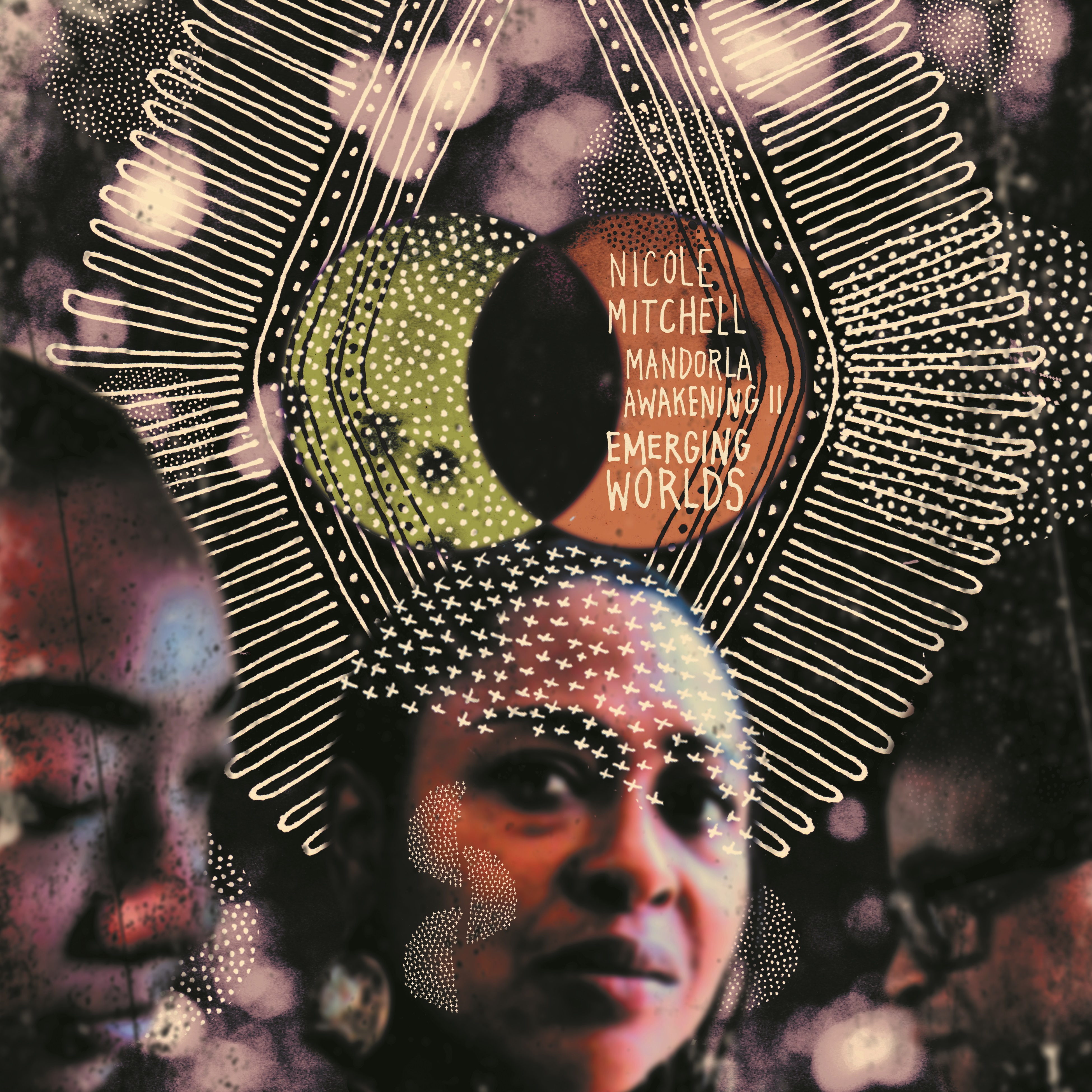
Mandorla Awakening II: Emerging Worlds
The innovative, boundary-smashing work of Nicole Mitchell, whom Chicago Reader music critic Peter Margasak has hailed as the “greatest living flutist in jazz”, has contributed new life to Afrofuturism in the 21st Century. A voracious reader of science fiction since her youth (Afrofuturist author Octavia E. Butler in particular… read more
Intergalactic Beings
FPE Records is completely thrilled to announce the release on April 15, 2014 of Intergalactic Beings, Nicole Mitchell’s second avant-jazz suite based on the Xenogenesis novels of Octavia Butler. This album is taken from a live recording done April 30, 2010, at the Museum… read more
https://www.nicolemitchell.com/
The New Vanguard
Nicole Mitchell, an Innovative Flutist With an Afrofuturist Vision

CHICAGO — The octet Bamako*Chicago Sound System had played almost an entire set at the Hyde Park Jazz Festival here in September when the woman who’d brought together this group — a rare convergence of Malian and Chicagoan improvisers — finally took a solo of her own.
When Nicole Mitchell did, her flute rose crisply above the ensemble’s sound, a mix of Chicago jazz’s windy clatter and the glinting lacework of the Malian musicians. Often she held a single note just long enough to establish balance, then launched swiftly up to a higher altitude.
Ms. Mitchell, 50, the artist-in-residence at this week’s Winter Jazzfest in New York, brings an eclectic ear and a frothy vigor to her instrument. The flute is rarely given much of a chance in jazz — maybe it seems too quiet, too liquid, too fey — but she has transcended all that, becoming a leading voice of the music’s cutting edge.
Yet Ms. Mitchell has the demeanor of an author more than a protagonist. Her projects typically begin with a conceptual narrative and end as a group endeavor, with many voices spilling into a collective expression. What can sometimes be forgotten is that Ms. Mitchell is probably the most inventive flutist in the past 30 years of jazz. So too can the fact that all her music — from its fetching melodies and shadowy harmonies to the synergistic resolve of her bands — flows from her careful engineering.
That was the case with Bamako*Chicago Sound System, a group that Ms. Mitchell coleads with the Malian kora player Ballake Sisoko, but that began as her brainchild. And it’s borne out particularly on the two remarkable albums she released last year: “Mandorla Awakening II: Emerging Worlds,” featuring her Black Earth Ensemble; and “Liberation Narratives,” a collaboration with the poet and activist Haki Madhubuti, her mentor for over 25 years.
Drawing in part on his influence, Ms. Mitchell founded the Black Earth Ensemble, a midsize group with a rotating cast, in the mid-1990s. The music she writes for it focuses on a storytelling sensibility. She started working on “Mandorla Awakening” — the ensemble’s most recent project and, so far, its masterpiece — after reading “The Chalice and the Blade,” the Riane Eisler book that sorts societies into two columns: those guided more by the will toward domination, and those that are more partnership-based and collaborative.
“ ‘Mandorla’ really started with philosophical questions, like: What is progress?” Ms. Mitchell said in an interview at a cafe on the South Side here. “There’s no more delusions about the fact that we don’t treat each other any better, as people, than we did thousands of years ago. So this idea of progress that we’re really focused on in our culture isn’t real in a lot of ways.”
She wrote a story set in 2099, about a remote land called Mandorla Island, where the population has mastered the balance between technological innovation and environmental conservation. A couple from the outside world arrives and realizes that they must adapt to Mandorla’s ancient customs to avoid the ravages of global warfare and environmental destruction sweeping the rest of the planet.
“The narrative came from kind of colliding dystopia and utopia together, finding ways to have this coexistence of things that are considered to be not compatible,” she said. To that end, she brought together jazz musicians from Chicago’s scene with practitioners of traditional Japanese instruments. As in the “Mandorla” story line — and so many of Ms. Mitchell’s endeavors — she saw latent potential in an encounter with the unknown.
The album proves that grand artistic ambitions can serve to catalyze as much as to proclaim. The dynamics shift dramatically — from strong, full-sail solos by Ms. Mitchell that are bluesy and chromatic and abstract to powerful beats carried by the cello and the cajón. The poet Avery R. Young recites Ms. Mitchell’s free verse, relating the futurist tale of Mandorla to the contemporary black freedom struggle.
As a child Ms. Mitchell remembers drawing inspiration from her mother, a painter whose imagery often featured black women in distant worlds, with seemingly superhuman powers. Her mother also read the politically laced science fiction of Octavia Butler, years before Afrofuturism became an established idea.
Living in Syracuse in the 1970s, her mother helped start the Black Folk Art Gallery, now called the Community Folk Art Center, and became close with a coterie of artists. But when Ms. Mitchell’s father pursued a job in the Los Angeles area, the family had to move. Attending a nearly all-white school in Anaheim, Ms. Mitchell experienced racist bullying far more bitter than what she’d seen in upstate New York.

